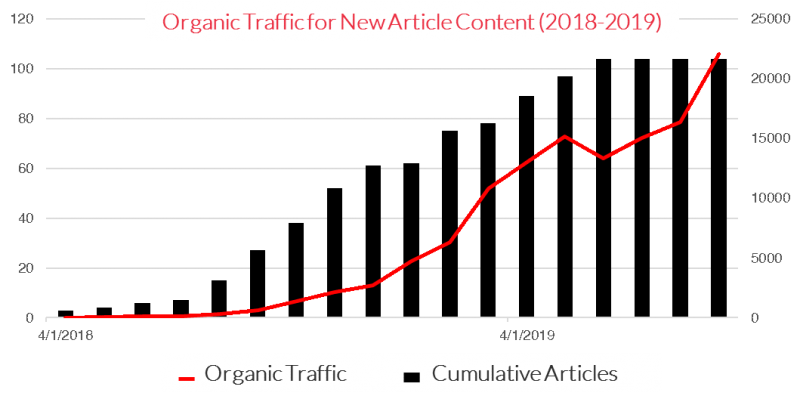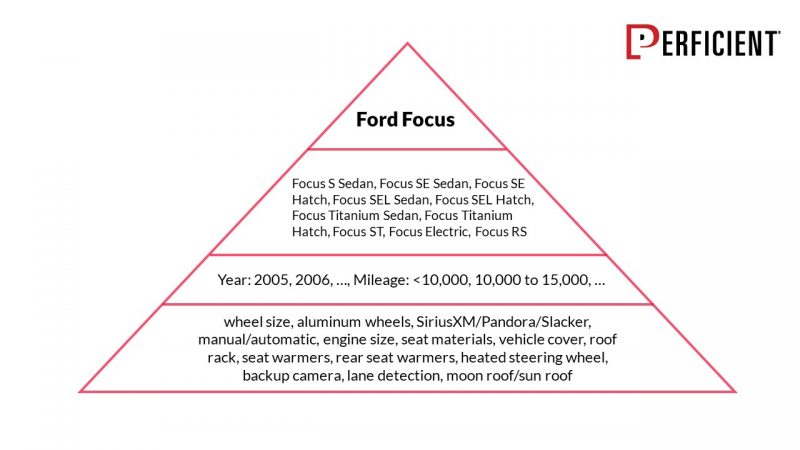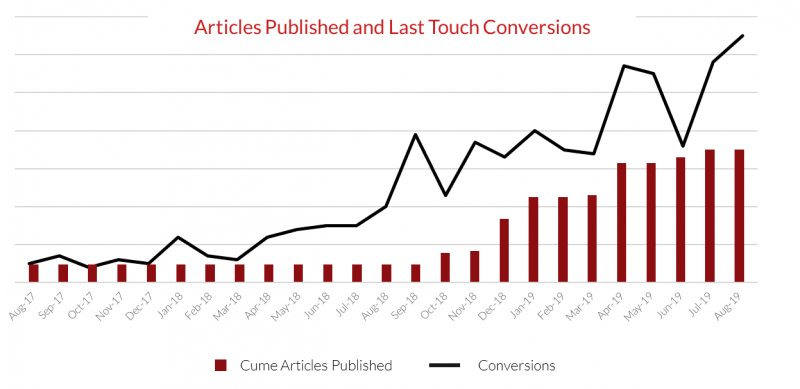User intent has been the focus of Google’s core algorithm update in the past couple of years. They rank websites and web pages that serve user intent best.
In this episode of the award-winning Here’s Why digital marketing video series, Eric Enge discusses how you can use an in-depth content model to really drive strong growth for your SEO in response to this series of Google core algorithm updates.
Don’t miss a single episode of Here’s Why. Click the subscribe button below to be notified via email each time a new video is published.
Resources
Transcript
Hi, everybody. Eric Enge here. I’m the Principal of the Digital Marketing Solutions Business Unit at Perficient. Today, I’m going to talk to you about how you can use an in-depth content model to really drive strong growth for your SEO. So, the discussion begins back in March of 2018 when Google began the series of core algorithm updates that we’ve gotten used to — five or six of these that they’re doing a year now. And what we’ve learned since then is that the focus of these updates is, of course, that they’re always adjusting many different things.
But the core focus seems to be on better understanding user intent, and better matching up the right websites and web pages to serve that user intent. If you think about it for a moment, if someone types in a two, three, or even four-word search query, it’s not really a lot of information about what they’re looking for. I mean, obviously, they can give us some pretty direct information, but there’s always these detailed things that the user really cares about that don’t show up in the query.
What we’ve also learned in the process is that sites that published in-depth amounts of content have done extraordinarily well through these updates and seeing a lot of traffic growth — assuming, of course, that the content was of high quality. But that leads us to the question: how broad and how deep do we go with our content? The answer is, first of all, as deep as possible, and as broad as you can afford. I’m going to explain as we go on through today’s episode.
One thing that has become really clear, though, is if you’ve based your SEO strategy for content around the notion of publishing content on all the high-volume keywords, you’re pursuing a flawed strategy that’s no longer good enough. Google wants people who produce sites, or they want to reward sites that produce content that addresses a broad array of user needs, not just have some lip service paid to talk about the highest volume search terms. And understanding how this impacts your strategy is really, really important. Basically, we have to start thinking about things that are not the high-volume keywords, and what other aspects users are thinking about and wanting to know about. I want to share a case study with you of a B2B player we work with who is a client of ours. We’ve been working with them for a number of years, producing, on average, ten pieces of content for them.
You can see in the chart you’re looking at on the screen right now that they’re getting crazy, really strong ongoing growth for their SEO.

They keep upping their investment with us over time because the program is working so well. This is the kind of thing I want to help you try to achieve for yourself. So, let’s take a look for a moment at this graphic, which shows a pyramid of terms based around the concept of searching for a car — Ford Focus, in this case. If you look at it, somebody’s entered the query Ford Focus. What do they really want?
 Well, it turns out it could be many different things. First of all, you have to ask yourself whether they want the electric car, or the hatchback, a regular sedan, these kinds of things. That’s kind of obvious. But then if they want new or used, it’s not a question of if it’s a used car. They have to care about the year in which it’s made or the mileage on the car, and that’s the next layer of concern. And then past that, it’s like, do I want the aluminum wheels? Do I want the heated seats? Do I want the heated steering wheel? What about rear heated seats, moonroof, sunroof? Before a user makes a final decision, they actually care about all those things.
Well, it turns out it could be many different things. First of all, you have to ask yourself whether they want the electric car, or the hatchback, a regular sedan, these kinds of things. That’s kind of obvious. But then if they want new or used, it’s not a question of if it’s a used car. They have to care about the year in which it’s made or the mileage on the car, and that’s the next layer of concern. And then past that, it’s like, do I want the aluminum wheels? Do I want the heated seats? Do I want the heated steering wheel? What about rear heated seats, moonroof, sunroof? Before a user makes a final decision, they actually care about all those things.
And so, your content needs to go much deeper, regardless of your topic area, to make sure you’re addressing the more detailed needs that people have. This is really one of the big keys to driving your SEO success here. Having said that, though, how do I get this kind of information, and how do I do the research?
Here are some of the things to think about. If you have persona models developed and you’ve done customer journey mapping, that’s awesome. You can leverage that information to learn a lot about your target prospects and how they’re thinking and what they’re looking for. If you don’t have that, and even if you do have that, talk to customers, talk to prospects, survey site visitors, talk to your product marketing people. Try to truly understand the needs hierarchy of the users coming to your site. Get well beyond those high-volume search terms and dig down in the lower level of details. And now, start thinking about producing content to address each of those more individual details.
With that kind of model in mind, the next question is, how deep really is deep enough? And how do I know when I’ve produced enough content? My guess is it’s probably a much bigger and broader and deeper project than you would instinctively think. If you have 20 heads terms for your business, this might mean you need 200 pieces of content. But I’m not even sure the multiplier of 10 that I use there is enough. It might even need to be more than that. But the key thing is to get this culture in mind of getting really in-depth with your content, addressing those more specific needs, dedicating potentially full articles to them. By the way, some of those individual needs might have little to no search volume. But Google’s looking for this. They’re looking for your ability to address a higher percentage of visitors than the competing site that you’re trying to outrank in the search results. And the more that you can do that, the better off you’ll be in your overall SEO strategy.
So, let me wrap up with one more quick case study. A second client I want to share with you is also doing about ten pieces of content a month. This is a more B2C player.

You see a curve that looks very similar to the one I showed you earlier in this episode. We’ve seen this over and over and over again, that the commitment to publishing content brings great results.
Don’t miss a single episode of Here’s Why. Click the subscribe button below to be notified via email each time a new video is published.
See all of our Here’s Why Videos | Subscribe to our YouTube Channel


However, writing such detailed information requires much more knowledge on a given topic. Not every copywriter is so well-read on all topics. However, there are a lot of articles on the Internet that only ask about the topic and do not answer the problem and question of the seeker